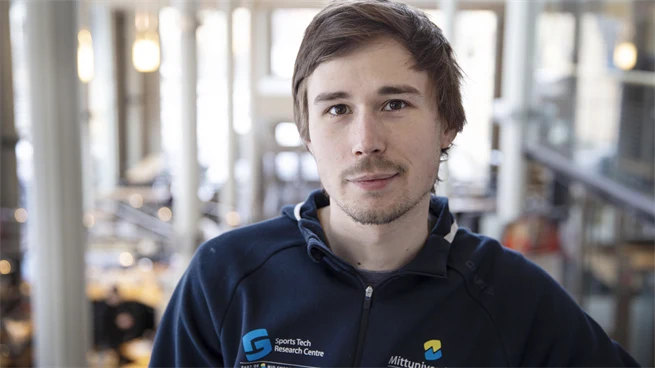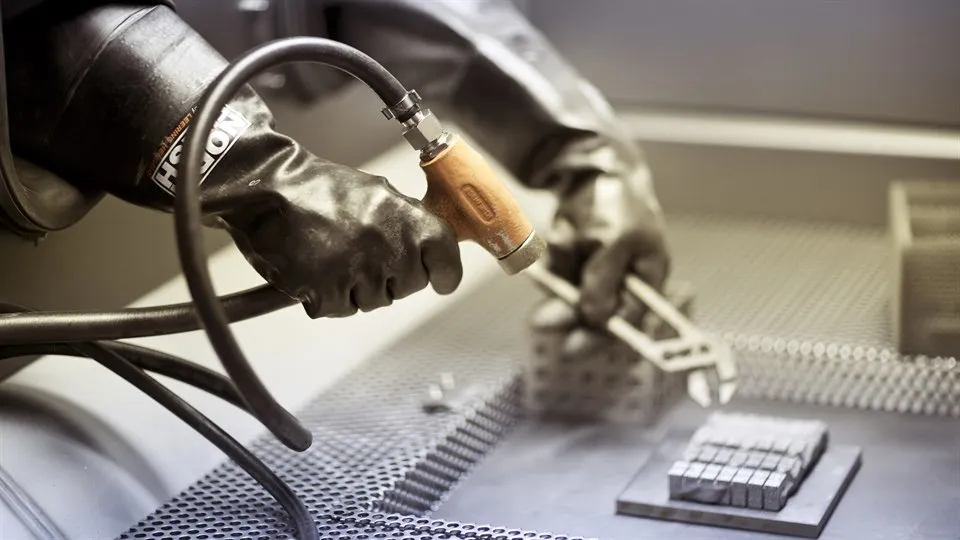Combination of heating methods streamlines additive manufacturing
A recent scientific paper in the field of additive manufacturing shows that electron beam melting can be combined with an alternative heat source to enable scale-up of powder bed methods.
Doctoral student William Sjöström, together with Carlos Botero, who is his supervisor at the Sports Tech Research Centre, has investigated how additive manufacturing (3D printing) using powder melting methods can be developed.
"In our project, we have looked at how we can add more energy that is not dependent on the electron beam in order to be able to build components more efficiently," says William.
At present, the technology is limited by the fact that there is only one electron beam that heats the entire surface in the manufacturing process. The larger the area you want to build, the longer it takes.
"To get additive manufacturing productive, it is important to have an extra heat source. We have used an electromagnetic heater that works in the near infrared spectrum. On the one hand, it is very fast, and on the other hand, it is completely separate from the electron beam. By using electromagnetic radiation to heat the powder and the electron beam to melt it, we can increase both speed and efficiency.

William Sjöström, PhD student in mechanical engineering at Mid Sweden University.
How additive manufacturing with the help of electron beams works
Traditional additive manufacturing with electron beam melting is done by melting a powder bed layer after layer in a vacuum chamber. The powder is melted pointwise when the accelerated electrons hit a specific point. It allows for complex geometries with a layer thickness of 50 micrometers, which corresponds to about half the diameter of a hair.
"It could be described as bombarding a controlled area with electrons until it melts. The advantage of using electrons is that you can control them without mechanical action, so it's completely electromagnetic, which means that you can jump quickly between different points. Traditionally, only one beam is used because the electrons affect each other," explains William.
The technology is relatively expensive and is mainly used to create high-performance components in the aerospace and medical industries, among others.
Advantages of the new manufacturing method
"We saw the potential to integrate a new type of heating method. No one had tried it before we applied for research funding to investigate the possibility. In addition to the method being much faster, there are other advantages to this solution. In traditional 3D printing, different types of metals can be sensitive to "smoke", which means that a cloud of particles can appear, which in turn crashes the process. We can avoid that now," says William.
The research group continues to refine and develop the method in the daily material development work in the lab.
"The article shows that this technology works on ordinary alloys with this type of equipment. The companies that we collaborate with in the project believe very much in this and have already patented the method," he concludes.
The article will be included in William Sjöström's upcoming dissertation. The research is funded by the Rolf and Gunilla Enström Foundation for Research and Development.
Contact

